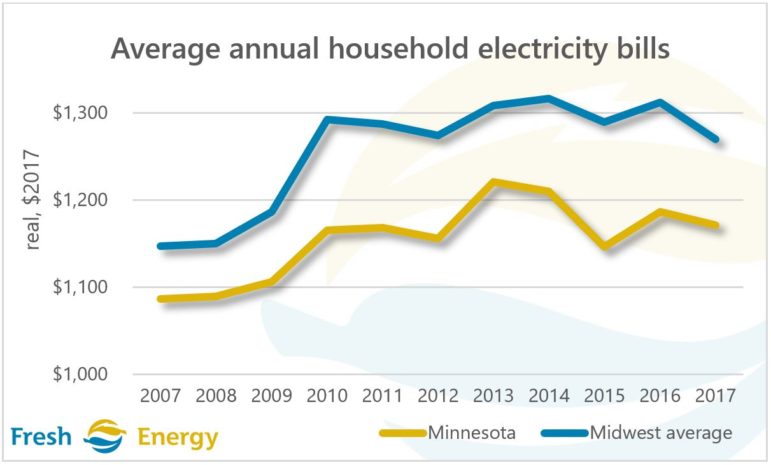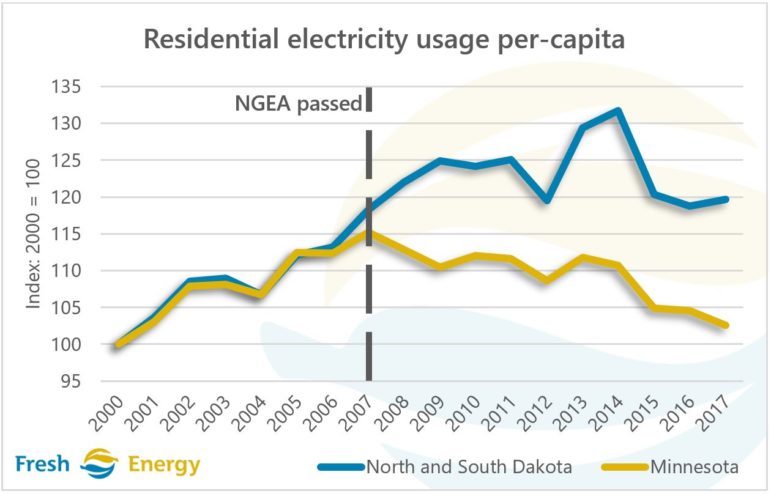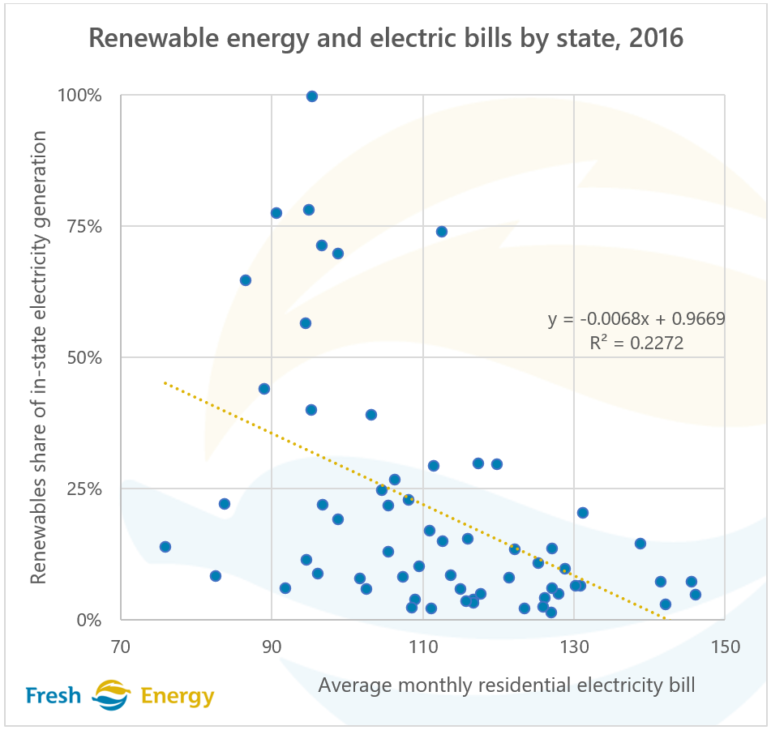
Center of the American Experiment is at it again, this time with an Op-Ed in the Walker, MN Pilot-Independent. The Golden Valley-based think tank desperately wants to believe that electricity in Minnesota is expensive and wind energy is the cause. In reality, electricity bills in Minnesota are among the lowest in the Midwest and wind energy is, by far, our lowest-cost electricity generation source.
One of the Center of the American Experiment’s favorite claims is that wind energy investments have increased electric bills in Minnesota. Fresh Energy has debunked this claim in the past, showing that the Center simply misunderstood the data it was using. Now the Center admits that Minnesota’s electricity bills are below average but argues “our bills are only lower than those of residents living in other states because we use less electricity than the national average.”
By the Center’s standards, even acknowledging the reality that we spend less on electricity than the U.S. average is progress. True to form, however, they still manage to come to a false conclusion. In reality, we spend less on electricity not because of natural gas heating, but because of good public policy.
The graph below shows how average household electricity costs in the Midwest have changed over the last decade. As you can see, electric bills in Minnesota are considerably lower than our neighbors in the Midwest (Illinois, Indiana, Iowa, Kansas, Michigan, Missouri, Nebraska, North Dakota, Ohio, South Dakota, and Wisconsin). A couple of things are worth noting here: first, this only compares Minnesota with other cold-weather states. In fact, 71 percent of homes in the Midwest region use natural gas as their main heating source, which is a higher rate than in Minnesota. Second, not only are our bills consistently lower than our neighbors, but our advantage has only grown over time.

So why are our electricity bills lower? Smart public policy! Specifically, the 2007 the Next Generation Energy Act, a bipartisan bill that spurred renewable energy, energy efficiency and conservation—all with the goal of reducing greenhouse gas emissions in Minnesota 80 percent by 2050. The impact of this landmark legislation can be clearly in the graph below, which compares electricity consumption in Minnesota and its more profligate neighbors to the west. As the chart shows, electricity usage tracked very closely in the three states before the 2007, but thanks to Minnesota’s investments in energy efficiency, electricity usage per capita has declined consistently over the past decade, while our neighbors’ usage has continued to increase.

But, what about the Center’s other favorite theory: that high wind energy costs are increasing electric bills? Again, that couldn’t be farther from the truth. Wind power is, by far, the lowest-cost electricity generation source in Minnesota. Thanks to extremely strong wind speeds, Minnesota’s utilities have been purchasing long-term contracts for new wind farms for less than 2¢ per kilowatt hour. For comparison, it costs between 2.5-7.5¢ per kilowatt hour to run an existing coal or natural gas power plant. This bears repeating: it’s cheaper to build a brand-new wind farm—with a guaranteed electricity price over the life of the contract—than it is to simply run a coal or natural gas plant that is already built, even at today’s low natural gas prices.
Moreover, renewable energy contributes tens of millions of dollars in property tax revenue to Minnesotan counties every year, and nearly 60,000 Minnesotans are employed in clean energy jobs across the state.
Low-cost renewables further decrease electricity bills by lowering wholesale power prices. Since renewable sources like wind and solar have no fuel costs, they help reduce clearing prices in electricity markets, to the benefit of all electric customers. The chart below shows the relationship between renewable energy and electric bills across the country: states that get more of their electricity from renewables tend to have lower electric bills.

It’s clear: renewables are cheap and plain good for Minnesotans.

